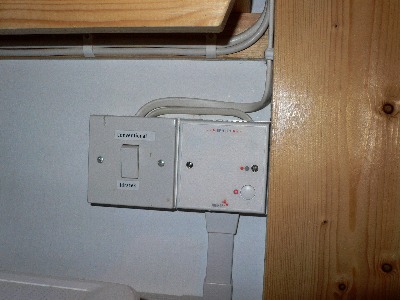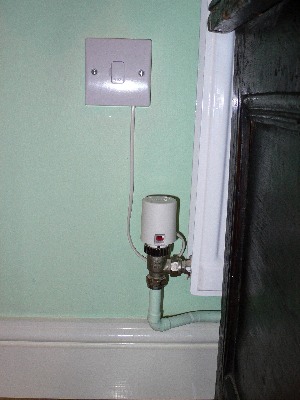After some time with a simple heating control scheme I have now pretty much fully automated my central heating.
My initial scheme simply had an SRH relay module in circuit with the existing thermostat. I also have a selector switch which determines which controls the boiler run signal to allow for any unforeseen situations, like the boiler servicing man visiting and being befuddled!

The boiler demand is based on required room temperature and occupancy status. This can be set up through pretty comprehensive profiles that allow room-by-room settings, with different profiles based on occupancy status and day of the week and the profiles can modify the set point on an hourly basis.
However, the simple scheme seems to interact with the radiator TRVs in an undesirable fashion and I have never been able to tune them to get the desired effect. In theory I expected to get the TRVs set to approach the profile set point and then they would turn off at a similar time to the demand being removed by Cortex. In practice it seems impossible to match them, so some rooms will overheat and some will underheat. From discussions with my colleagues (with pretty normal single thermostat setups) it seems TRVs are difficult to get right, if at all.
So I am pleased to have fitted electrically actuated valves in place of the TRVs, so that radiators can individually be under Cortex control.

The actuators are resold Sauter units supplied by Idratek. I think they are also available as Oventrop units, they certainly look very similar. The actuators use a similar wax cartridge to normal TRVs, but heat the cartridge electrically rather than from the room ambient temperature. I used the 24V variant, but mains versions are also available, with more restrictions on the wiring. Each valve control supply is wired back to a central position and controlled by a QRI-002 DIN relay unit to switch current from a 24V supply.
I used normal fused outlet plates to terminate the wire attached the actuator, but the wire is quite slim, so I think you could route it through one of the ventilator slots on an Idratek patress, similar to my curtain setup. I think central relays are preferable to local relays, since the audible relay click could prove irritating on a radiator control, but it might be nice to use something like a QBI to get local indication of heating status and maybe some buttons for instant overrides. This is the main reason my pattresses are high up the wall than would be strictly necessary.
Of course, if you have room by room MFP panels then this would be superfluous.
I still have a single radiator with a normal TRV (Danfoss valve body incompatible with Sauter actuator) and an uncontrolled "bypass" radiator. Due to some upcoming plastering I am going to have to drain the system to remove a radiator so I will investigate having an automatic bypass valve fitted and whether this will allow control of either or both of the remaining radiators to be included in the scheme.

Leave a comment